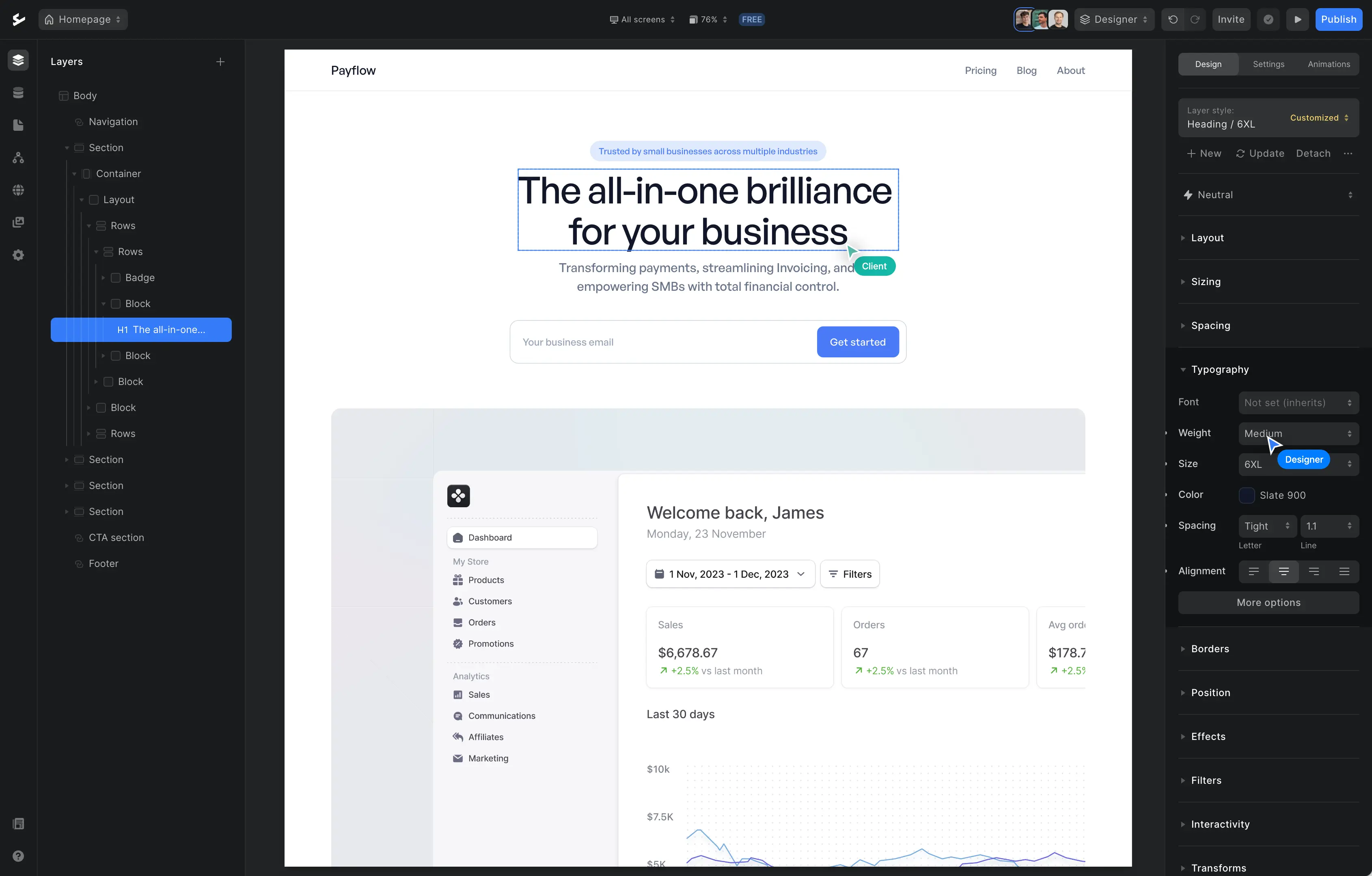
Want to share your ideas with the world and connect with your audience? Build a blog, but how? How do you design a blog that drives ROI?
A blog is crucial to any content marketing machine or digital marketing strategy. For some influencers and companies, it is the only content strategy. Content is king, so content creation is necessary. A blog can also be your distribution platform.
Understanding buyer personas is essential in determining the direction of your blog strategy. With the right content and call to action (CTA), a blog can increase conversions and improve search engine rankings.
We are sure your head is full of content ideas. There are many types of content, from case studies, guest posts, and in-depth how-to guides to infographics. So, it’s time to create your new virtual space! We are going to focus on blog design. Your blog is your canvas.
A well-designed blog is more than just a platform for sharing ideas—it's a powerful tool for driving business return on investment (ROI). A good blog design can make your brand more visible, get people talking to you, and make visitors loyal customers. Talk about lead generation!
This comprehensive guide will explore the essential elements of blog design to help you build a successful blog and maximize your ROI. Let’s design.
What is Blog Design?
Blog design involves making a blog look better, work better, and be more accessible for people to use. This will increase people's interest in your blog, encourage them to read your blog posts, and convert more visitors into customers. It involves choosing the proper layout, fonts, colors, and visual elements to create a good-looking and easy-to-use environment.
Sounds easy? Think again. It’s an entire process!
With millions of blog posts published daily, standing out in the crowd requires more than high-quality content. Research shows that design can significantly impact a site's trustworthiness and credibility. A well-designed blog attracts visitors and keeps them engaged, increasing the likelihood of conversions, and driving ROI.
Blog Design vs. Web Design: What’s the Difference?
The primary difference between a blog and a website design is structure, purpose, and user interaction.
Structure: Websites usually have a simpler and more organized structure, with many pages and sections that showcase a business's products or services. In contrast, blogs are organized chronologically, focusing on regularly updated content with the latest posts appearing first. Their design is usually more straightforward, focusing on readability.
Purpose: Websites are built to sell, while blogs educate first before selling. Blogs allow businesses to show their expertise and be thought leaders beyond LinkedIn. Sometimes, blogs are more editorial and can even serve as newsfeeds.
User Interaction: Websites focus on user transactions and moving through different parts. Blogs encourage readers to interact with each other through comments and social sharing, creating a community around specific topics. Many modern websites incorporate blogs as a section, blending elements of both to improve engagement and provide fresh content.
Effective Blog Design Elements
Readers have a goal when they come to your blog. Whether it’s to answer a question they have or simply research, it’s essential to make it as easy as possible to achieve their goal. Here is where these design elements come in:
1. Prioritize Readability
Readability is crucial for keeping visitors engaged with your content. To improve readability:
Use a font size between 15px and 18px for body text (fonts are important!)
Choose a clean, sans-serif font for a modern look
Include white space around text and images
Use a layout that allows for easy reading and skimming, including wide margins and bold subheaders
2. Implement a Content-First Approach
Adopt a content-first design strategy, where your blog's content takes priority in your blog design. This approach ensures that your design effectively communicates information on your blog–whether written, audio, or visual. A content-first style can improve the reader's experience and simplify your design process.
3. Create a Consistent Visual Identity
Your blog should reflect your brand's identity and values. Maintain consistency in your design elements so your target audience can navigate your blog posts easily. This makes it easy to find CTAs and improve the visibility of your backlinks. You should also:
Choose a color palette that aligns with your brand identity
Incorporate your brand's logo and typography
Maintain a consistent voice and tone in your writing
4. Optimize for Mobile
With increasing readers on mobile devices, businesses should design their blogs with a mobile-first approach. To do this, you can:
Ensure your design is responsive and adapts to different screen sizes
Prioritize content and reduce distractions on smaller screens
Optimize images and media for faster loading on mobile devices
5. Implement an Intuitive Navigation Structure
Make it easy for visitors to explore your blog and find relevant content:
Create a clear and simple menu structure
Use categories and tags to organize your content
Implement a search function to help users find specific information
6. Include Visual Content
Visual elements can significantly improve your blog's appeal, readability, and engagement. They can also help break up blocks of text. To include visual content, you can:
Use high-quality images that complement your text
Create infographics to simplify complex information
Embed videos to increase engagement and time spent on your site. Using video maker tools allows you to easily create professional-looking videos that enhance your blog content.
7. Optimize for SEO
Ensure your blog design supports Search Engine Optimization (SEO) efforts. Make it easy to include SEO titles and meta descriptions and place your headings strategically. SEO is more than keyword research and answering SERP questions. Design can help improve SEO by:
Implementing a clear site structure with internal linking
Including a content table
Ensuring your H1 is front and center
8. Use Effective Calls-to-Action (CTAs)
Strategically place CTAs throughout your blog to guide visitors and increase conversion rates. You can do this by:
Using contrasting colors to make CTAs stand out
Writing clear and concise copy that delivers your products or services value
Position CTAs within your content
Blog Design Best Practices
Now that we have gone through some design elements, here are some best practices to keep in mind while designing:
Keep It Simple
Avoid clutter and create a clean, organized layout that highlights your content. Simplicity in design can reduce noise and overload for your readers. Make your content easy to read and navigate through.
Use White Space Effectively
Include all the white space (or negative space) you need around your content elements. This helps create a sense of balance and makes your content easier to read and digest.
Implement a Clear Visual Hierarchy
Use design elements like typography, color, and spacing to create a clear visual hierarchy. This helps guide readers through your content and highlights essential information.
Optimize Loading Speed
Ensure your blog loads quickly to prevent visitor frustration and improve SEO. Optimize images, minimize plugins, and consider using a content delivery network (CDN) to improve loading times.
Use High-Quality, Relevant Images
Include high-quality images that support your content and improve the overall visual of your blog. Avoid generic stock photos. Use unique, relevant visuals that align with your brand.
Implement Social Sharing Buttons
To encourage readers to share your content, include social sharing buttons. Place these buttons in easily accessible locations, such as at the beginning or end of your posts.
Create an Engaging "About" Page
Design an engaging "About" page that tells your brand's story and helps visitors connect with your blog's purpose. This can build trust and encourage repeat visits.
Measuring the Success of Your Blog Design
To ensure your blog design is driving ROI, regularly monitor key metrics such as:
Bounce rate
Time on page
Pages per session
Conversion rate
Social shares
Use tools like Google Analytics to track these metrics and make data-driven decisions to improve your blog's performance.
How to Build Your Blog (On Any Platform)
We’ll use examples, too!
Step 1: Choose Your Platform
Before you start, let’s decide how you’ll bring your blog design to life. First, you need to decide what platform you want to use. Is your website on the same platform? Can you add a blog to your website? Are you running a blog without a website? What are your goals?
WordPress vs. Ycode
Should you create a blog in WordPress or another blogging platform? There are many options these days. Wix, Webflow, you name it.
You may want a quick and easy solution if you're a first-time blogger. WordPress has ready-made templates and plugins available. A WordPress blog just needs a WordPress theme. Import a blog template, make a few tweaks, and you can start blogging.
Building your blog is a much better solution if blog design, flexibility, and scalability are high on your wishlist. With a no-code builder like Ycode, you’re in total control of the design and usability of your new blog. It’s easy. You don’t need any previous HTML or CSS knowledge. Use the drag & drop builder and connect APIs to use and show external data. You can switch to Ycode and give it a try!
It might take you a little longer to learn and build your blog, but you can quickly scale it once you do. And you’ve learned a new skill that’ll be highly valuable for decades.
See more:
Step 2: Pick a Domain Name
What is your blog’s name? The next step is to choose a domain name. It could be your brand or your blog’s name.
When you create a new web project with Ycode, our no-code builder automatically generates a public URL. It works fine but could be more pretty (xyz.ycode.site). Most web builders do.
Buy a domain name and set it up as a custom domain within your web builder for a more professional look. You can easily order domain names on websites like GoDaddy, Namecheap, and Bluehost.
Note: If you chose Ycode, you don’t need to pay extra for hosting when you buy the domain name—Ycode takes care of the hosting.
Step 3: Build Your Blog with Effective Web Elements
Though each blog differs, good layouts share a few web design elements. We’ll discuss more minor design elements and ones related to the blog structure. We have discussed web elements, but let’s go even more in-depth:
Blog Structure Elements
A. Homepage
A homepage is like an ever-changing gallery wall with new content. Due to its changing nature, it’s best to keep the wall and its environment simple. A neutral background, some striking frames, and a tagline are all you need. This is how you should design your blog post layout, too.
Give each element on the blog’s homepage enough room to breathe with white space. When deciding on your color scheme, ensure it complements your blog images. Be careful about using background colors or header images that aren’t aligned with your brand.
When deciding on homepage web elements, pick the essentials and refrain from any extra fluff. With blogs, filling the page and sidebar with widgets like galleries, recent posts, and social feeds is tempting. But are they necessary? It might only distract and confuse readers.
On the other hand, think creatively to see what website design elements would fit your blog.
For example, the virtual travel map on The Blonde Abroad’s travel blog is relevant. It offers a great user experience and is a fun way for visitors to explore different destinations.
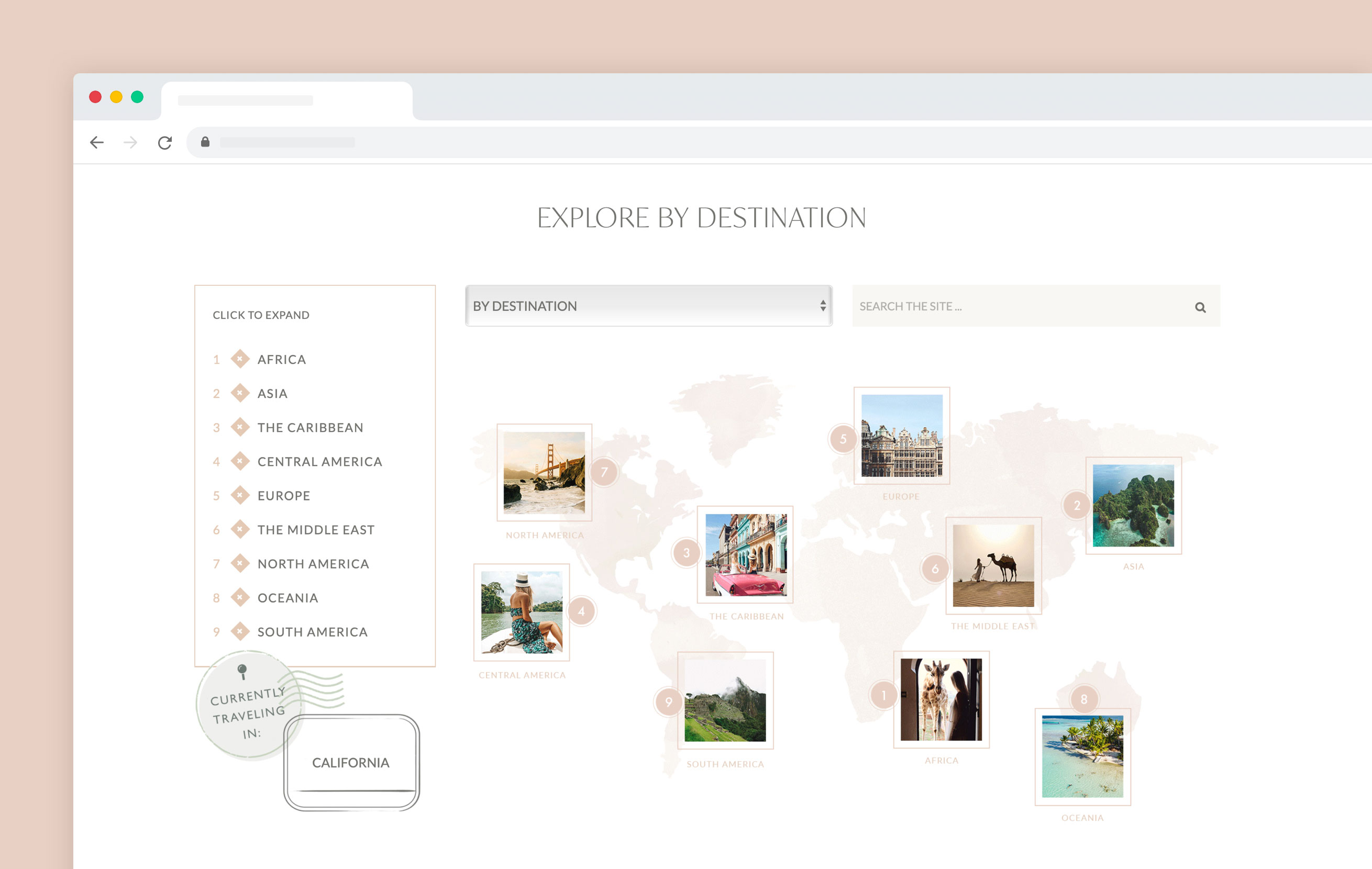
Finally, it’s essential to know how you will present your content. Will you use a grid layout, an online magazine look, or a simple blog layout? What’s more important–pictures or text?
Studio McGee uses a grid layout. The minimalist blog layout works well and exudes serenity. Though many new posts are promoted, in one view, it’s not chaotic.
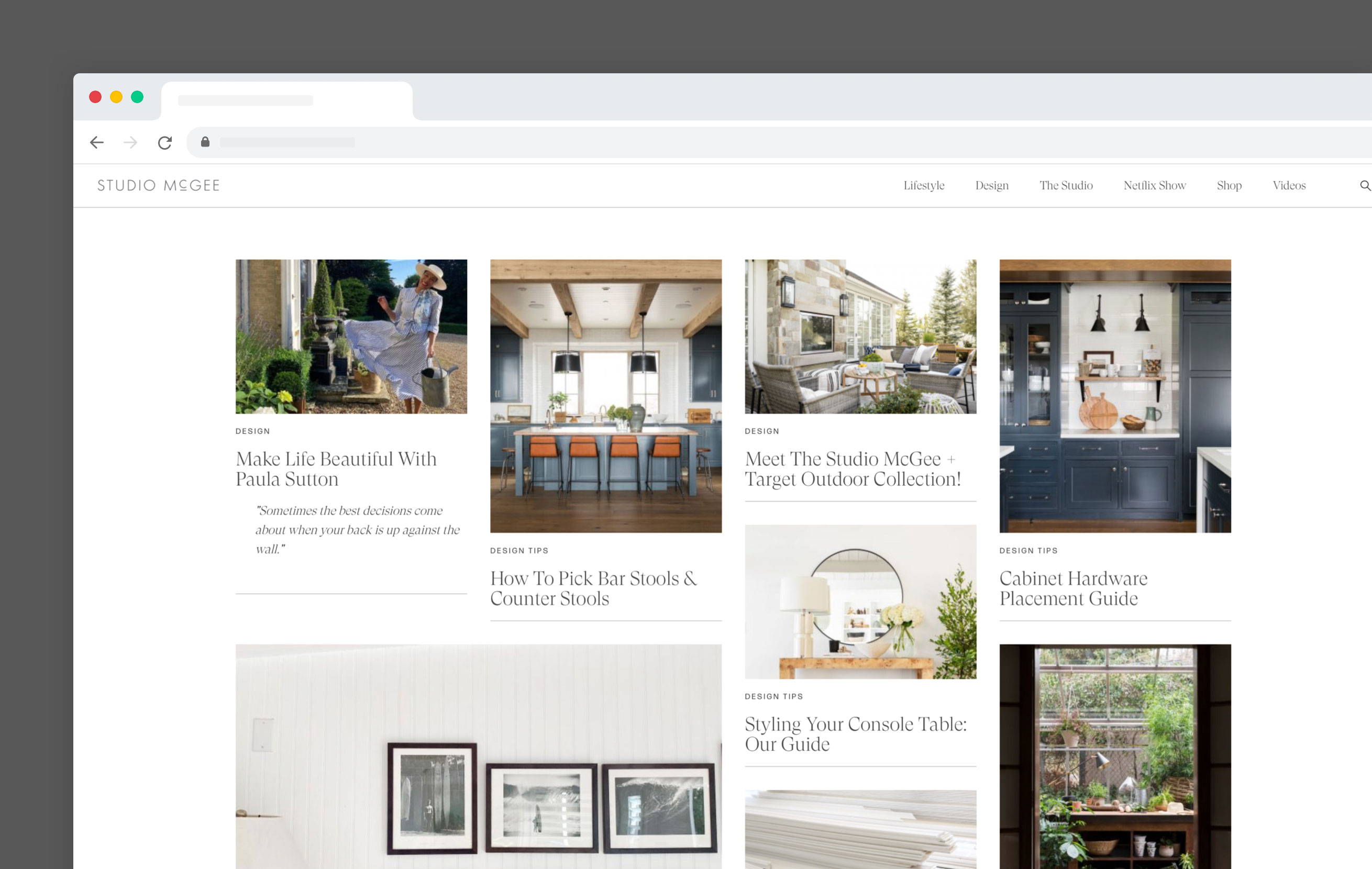
Oh Joy is an excellent example of a blog home layout where the images center attention. The vibrant, high-quality images playfully scattered over the homepage make this blog layout super engaging to scroll through.
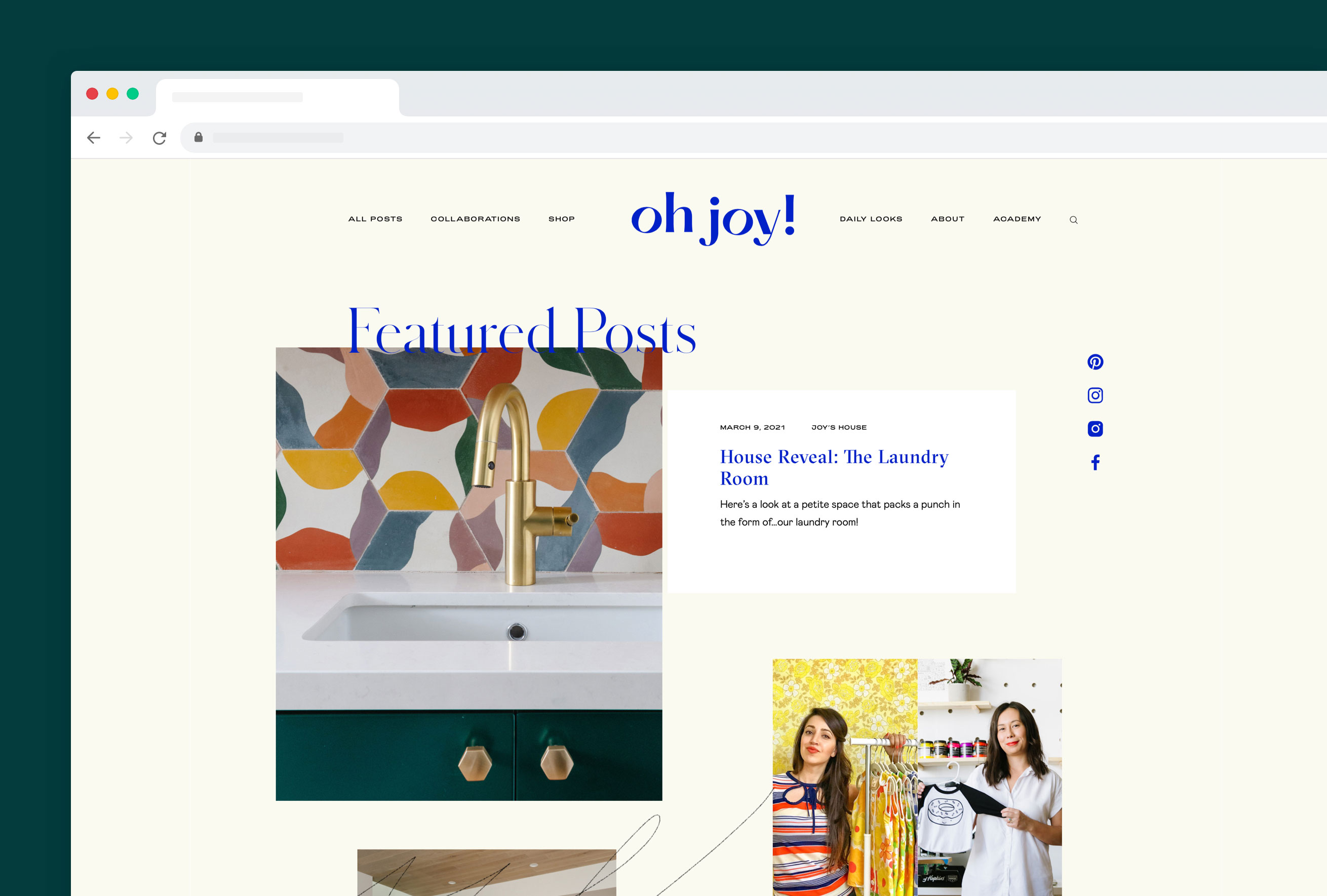
When your blog is less about images and more about your writing, this homepage from Rice Potato is a great example. Though the text takes up most of the space, the logo on the right and the compact menu on the left give the website an artsy feel.
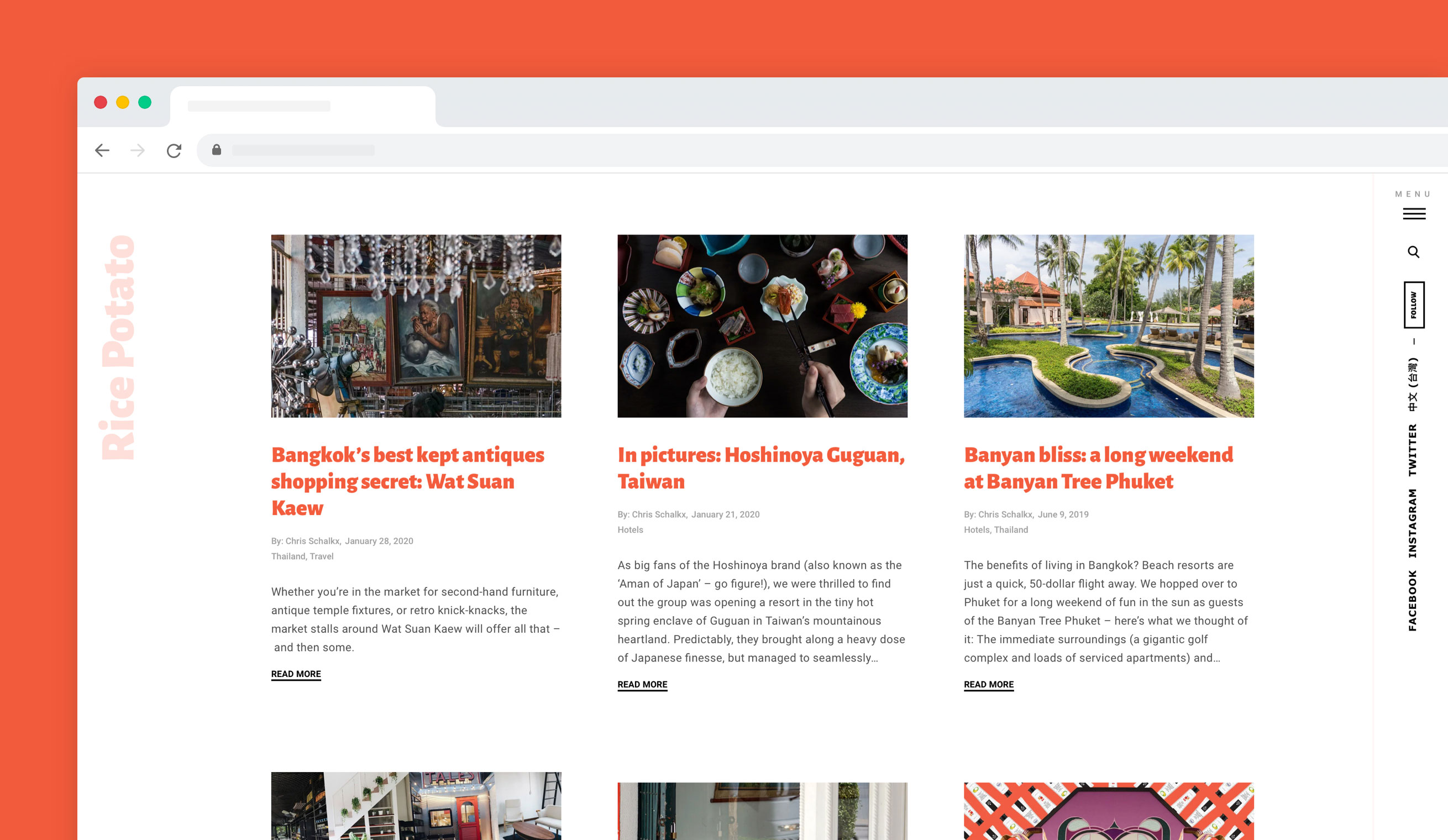
B. Navigation
The navigation bar helps visitors find what they want, understand your website's rules, and quickly move through all the pages. Blogs have article pages but only a few website pages.
You can link to an About and Contact page from the top navigation on a new blog. As you write more blogs over time, you can link to blog categories, guides, or other content you’ve created.
How do you design the ideal navigation bar? Here are some design principles to adhere to:
Keep it simple (this is the general rule for blog design!)
Add hierarchy. Mention the most important categories and work with subcategories in a dropdown menu to link additional items
Shorten titles as much as possible (“Blog” vs. “Read our blog”)
Keep the navigation bar consistent throughout the entire website
Design a more compact menu version for mobile
Use the footer menu for pages that don’t fit in the main navigation
Optional: Add a search bar (this element is also often seen in the sidebar)
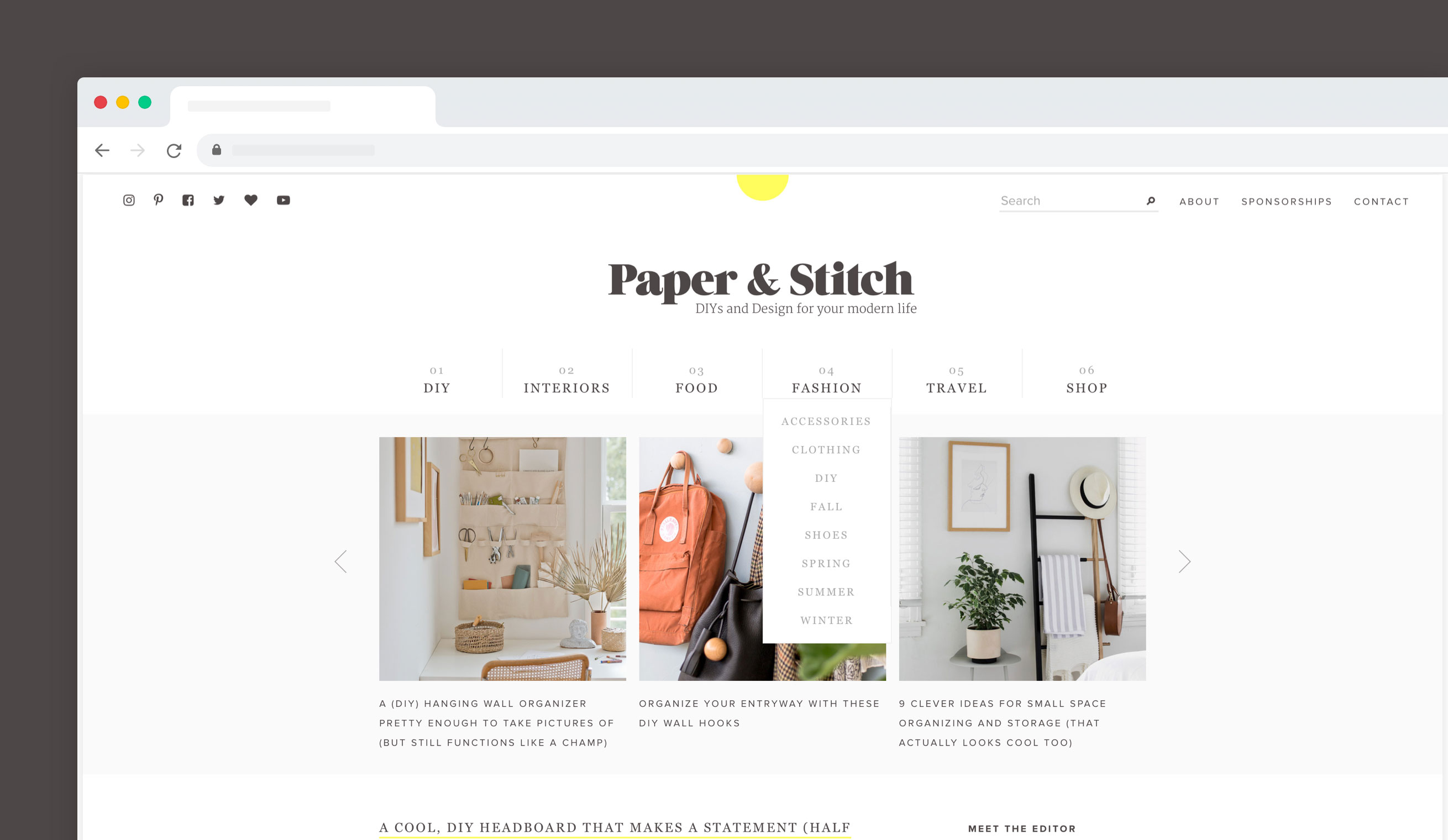
At Ycode, we love seeing navigation bars like the one from Paper & Stitch. It’s compact and minimalistic. As a visitor, you can immediately pick your favorite subject (general or more specific in the dropdown menu) and start reading.
C. Sidebar
Like a navigation bar, a sidebar is a web element that helps people navigate your blog more easily. A sidebar often contains more information about the author, a search bar, and post recommendations on blogs.
To create attractive blog sidebars, remember one rule: don’t overdo the widgets. A blog sidebar often contains these elements:
Author's introduction (with a link to the About page or post)
Search bar
Social media links
Blog categories
Links to important pages
Optional: New video or podcast episode
Optional: Ads
Design the sidebar with your audience in mind. Ask yourself, "Is this content relevant to my blog readers?" The fewer items, the more likely they are to be seen. Furthermore, you can use one sidebar or have two, one for the homepage and one for individual blog post pages.
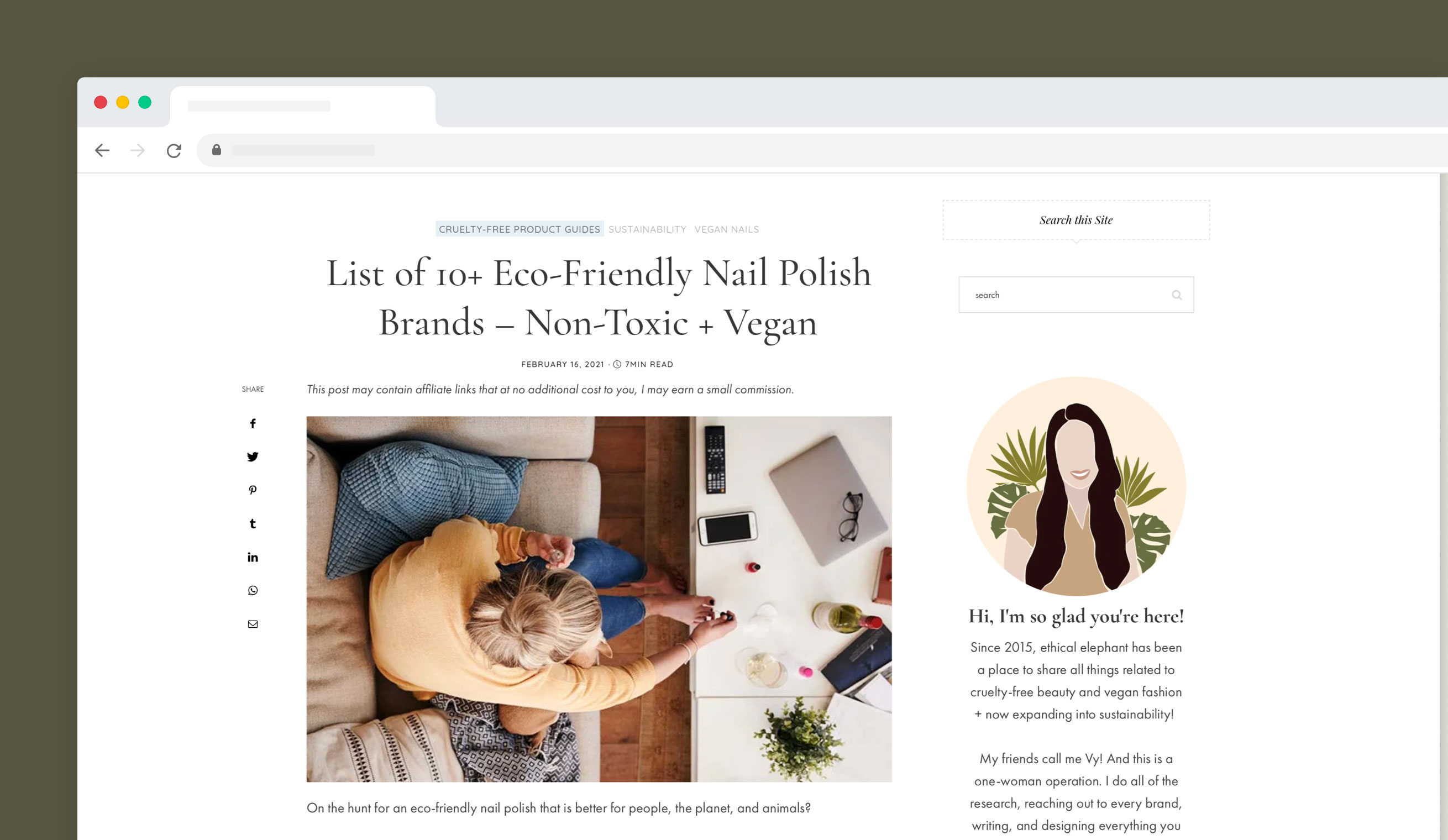
The Ethical Elephant blog is an excellent example of a blog homepage sidebar. It also has social subscribe buttons and cruelty-free resources.
D. Blog Categories
Make your blog easy to navigate by grouping articles together in blog categories. You can show the categories at the top of the blog page, as a tag on the blog post, or in the sidebar. You can even do all three options!
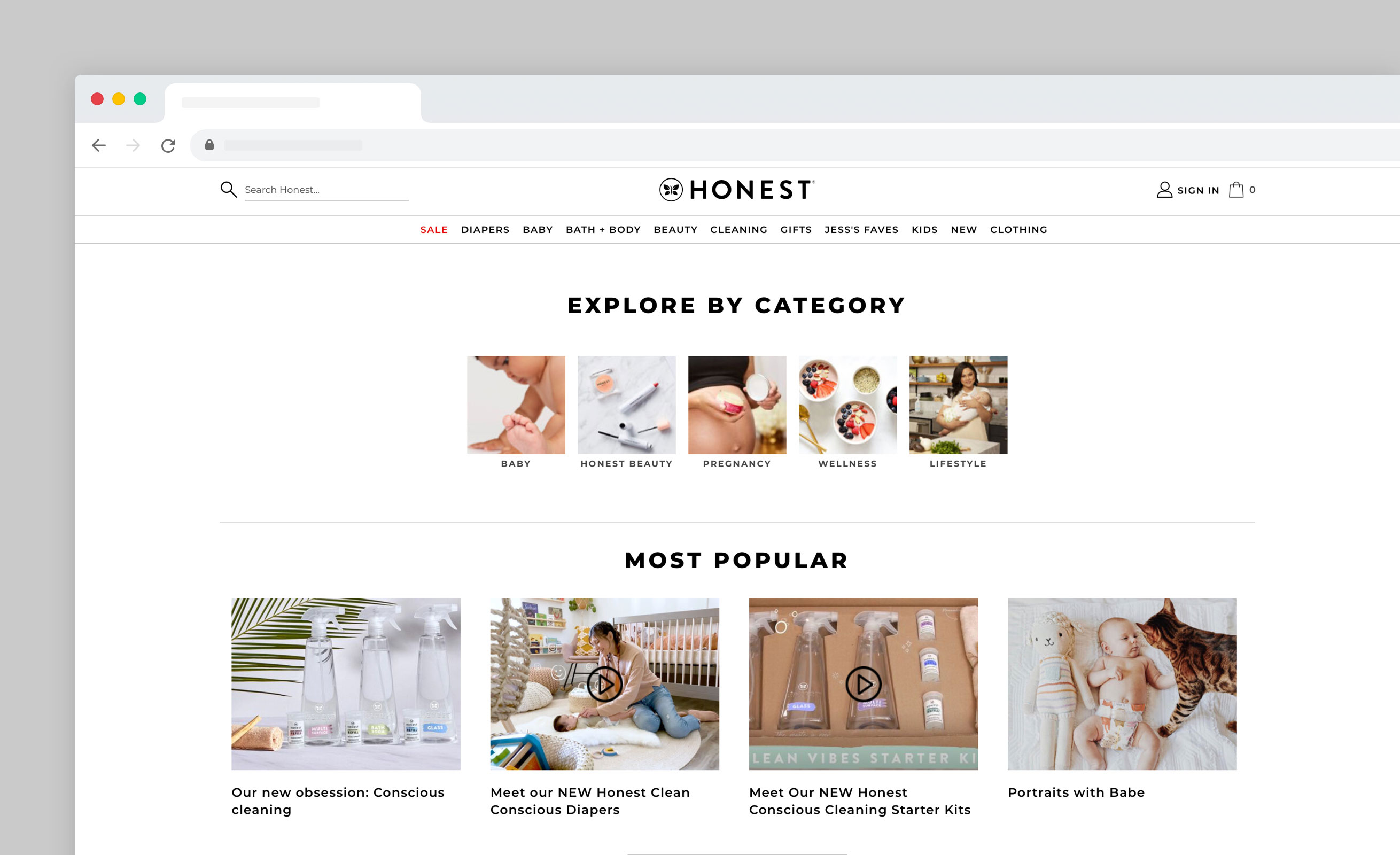
The categories are mentioned at the top of Honest Company’s blog. The blog design includes easy navigation and a calming, well-ordered landing page. Scrolling down, you’ll see that the main blog page is divided into clear sections:
Explore by category
Most popular
The latest
Editor’s picks
E. Comment Section
Engage with readers by adding a comment section to your blog. You could build your blog comment section or use the Disqus plugin to allow comments on blog articles. It’s easier to use Disqus’ universal embed code. You can moderate comments and filter out spammy guests via the web app.
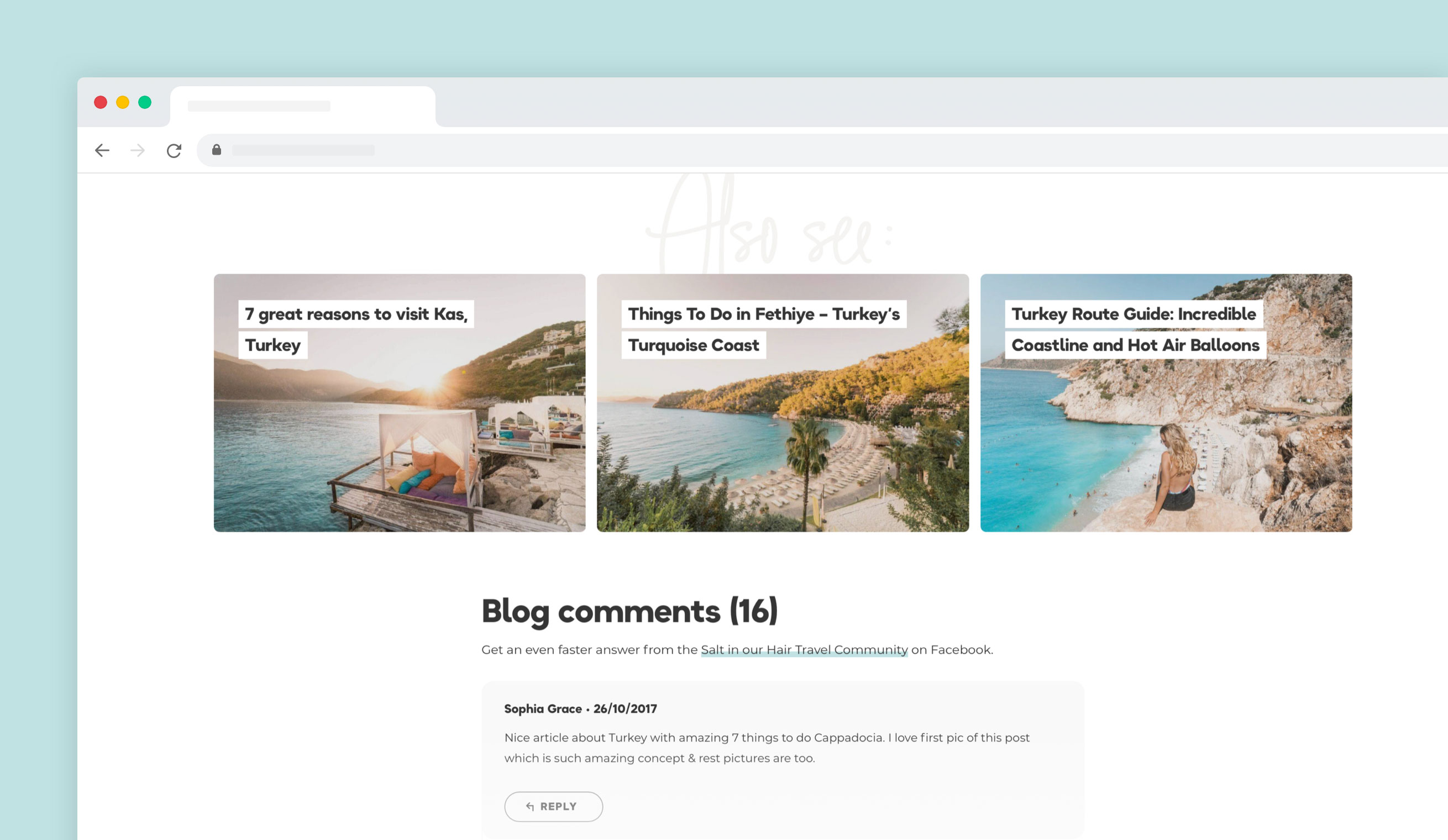
On Salt in our Hair, readers have interacted with her post and left 16 comments. A little line under the blog comments also refers to their Facebook community. If you run an online community (like our Ycode community), the comments are a great place to promote this space.
F. Footer
In web design, ending every web page with a footer is a courtesy. This section often contains important blog links or links that don’t fit into your main navigation. Or any additional information you’d like people to know about.
On blogs, the footer often contains copyright information and links to your use and privacy policies or terms and conditions. Additionally, you can embed your newsletter signup form in the footer.
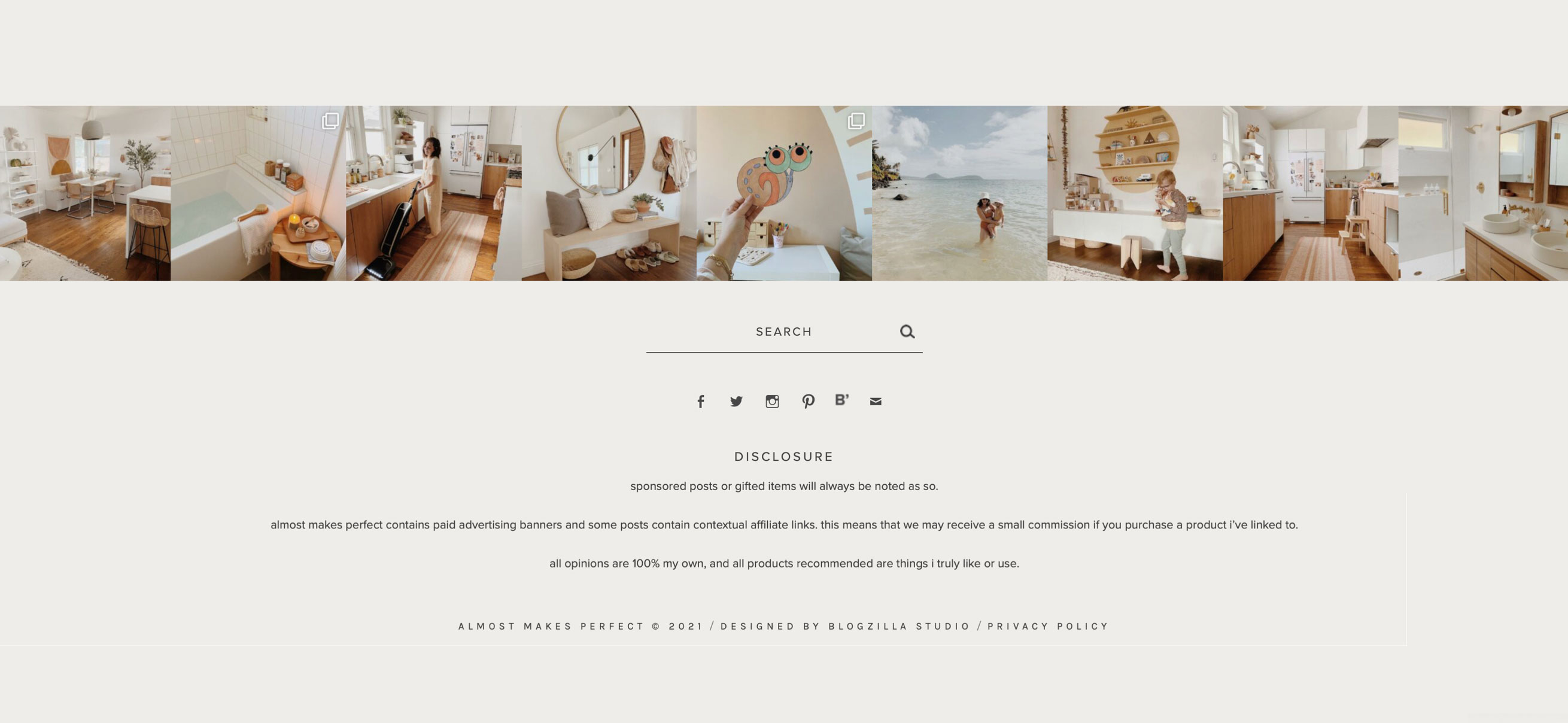
We like this simple footer from Almost Makes Perfect, an interior design blog. It has an embedded Instagram feed, a search bar, social media links, copyright and privacy information, and a disclosure section. Disclaimers like these might be helpful once your blog grows and you start using affiliate links.
Minor Design Elements for Detail
A. Logo
The first thing visitors will likely see is your blog logo. Flaunting right at the top of the page, the image helps your blog’s brand recognition. Therefore, make it memorable.
You can have a blog logo made by a graphic designer. An easy way to hire freelancers is by using platforms like 99 Designs, Fiverr, or Upwork. You can use DIY logo-creating tools like Canva to get crafty.
See more:Top 30 Freelance Websites and Platforms For Web Designers
B. Typography
Since people visit blogs to engage with engaging content, you want to ensure that all copy is readable. Opt for clear fonts (e.g. sans-serif or serif fonts), a good amount of line spacing, and large enough font sizes (ideally, 16 px for text). If you want to combine fonts, keep your mix to a maximum of three.
See More:20 Best Fonts for Web Design
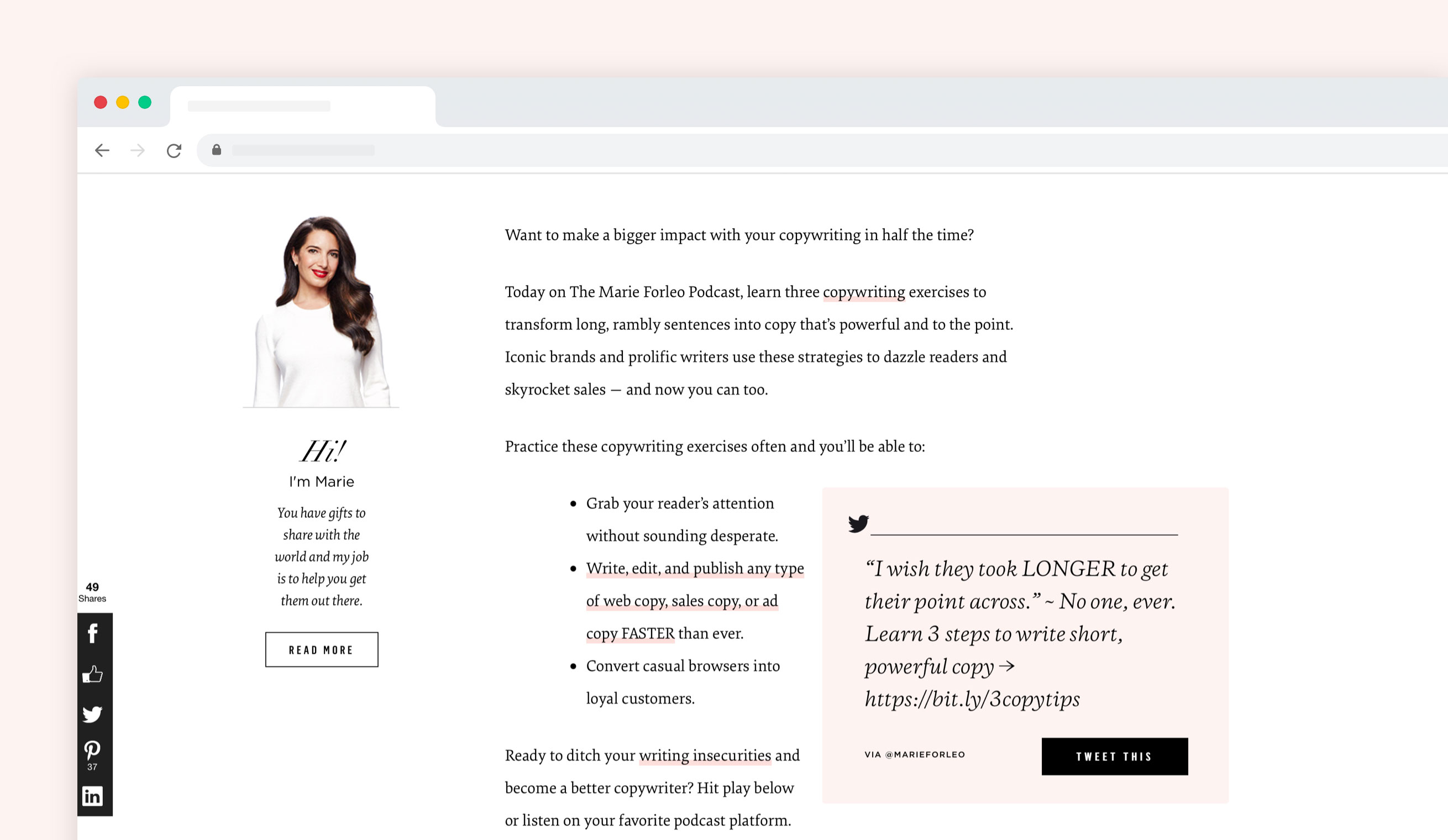
Marie Forleo’s blog design is on point. In this post, the text is large and spacious, but she also uses boxes, quotes, videos, and tweets to make articles more engaging. Oh, and how sleek are those link indicators?
Step 4: Add Elements to Grow and Engage Your Audience
Once your blog is live, add elements that grow your audience. Here’s how to transform your personal blog into a small business.
Social Media
Social buttons are essential to your blog design. Once you’ve reserved your handles, you can add the links to your header, footer, and sidebar. Anywhere that seems fitting!
Once you’ve added a good amount of content on Instagram or Twitter, you can embed your latest posts in your web design. Many blogs have their Instagram feed embedded somewhere on the homepage or in the footer. This promotes follow, but also adds more imagery to your blog design.
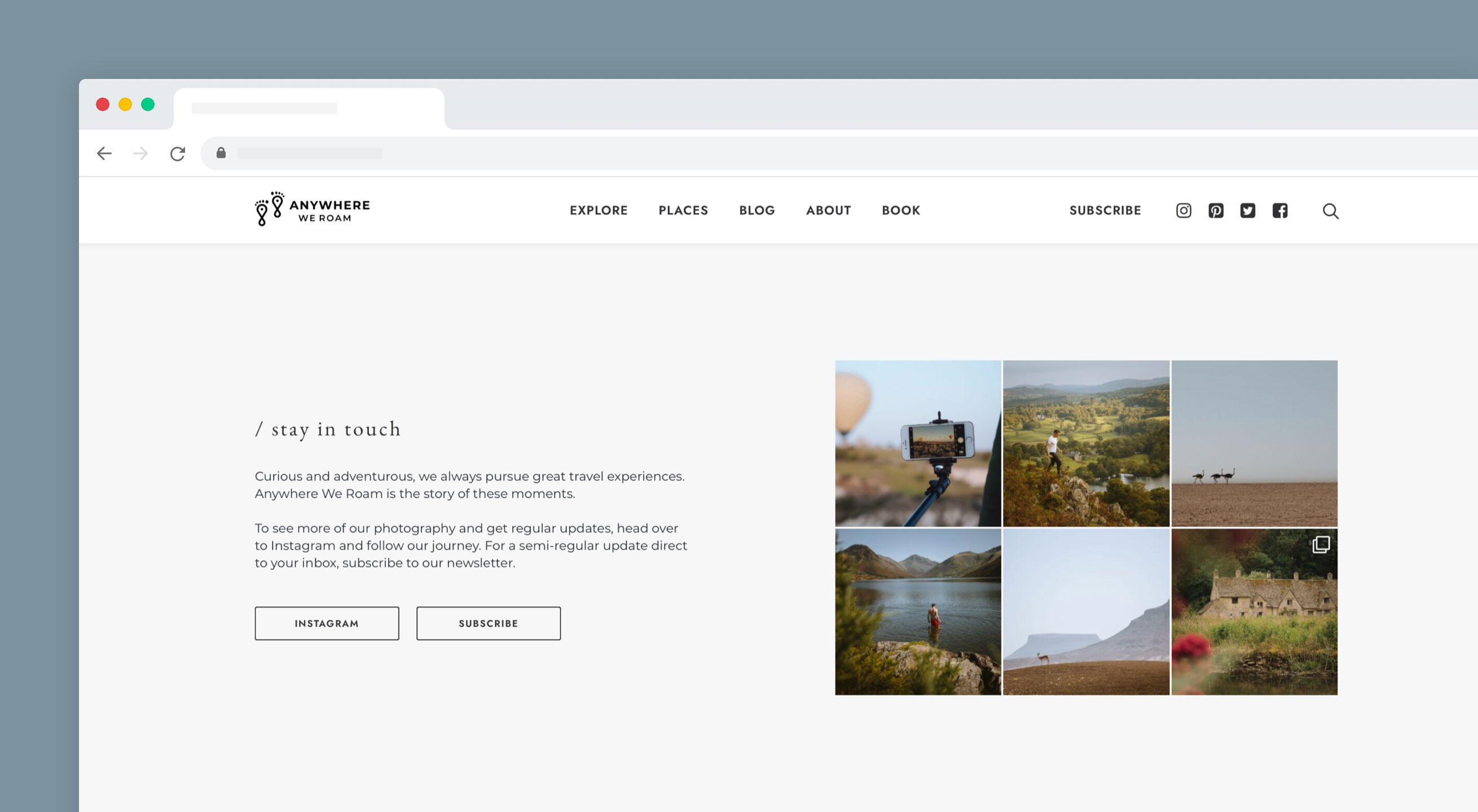
In Anywhere We Roam, an entire section promotes its Instagram and newsletter subscriber lists.
SEO
Search Engine Optimization (SEO) is essential for your blog when you want to grow and reach more people. For your blog, it’s best to start with on-page SEO. This means finding the keywords you want to rank for, creating blog content around those topics, and optimizing existing content.
Email Marketing
A great way to build a following is by having a newsletter. This allows visitors to leave their email and become email list subscribers. You can send them a newsletter or notify readers when a new blog post is published.
You’ll need to promote your newsletter to convert visitors into email subscribers. Most blogs embed a signup form in the header, sidebar, footer, or a combination of all three.
Ads
You can monetize your blog with ads. In this economy, who wouldn’t? Get paid for the content you provide and the effort you put into growing your blog.
Most blogs use ads to grow their blog. One tactic is to place ads in your blog’s sidebar or above the feed. Make sure to embed ads neatly into your blog design so they look like they’re part of the design — this will increase click-throughs.
Tip: When ads aren’t direct brand cooperations, most bloggers use Google AdSense for their ads. These paid advertisements are embedded into your website using Javascript. In Ycode, you can embed Javascript via HTML embed.
Build Your Blog with Ycode
Designing a blog that drives ROI requires careful planning, creativity, and attention to detail. By focusing on readability, mobile optimization, visual appeal, and user experience, you can create a blog that attracts visitors and converts them into loyal customers. Remember to test and improve your design whenever you get user feedback and performance metrics. This will help you make the most money from your blog.
Ready to build your blog? From choosing your platform and which elements to design to what steps to take after launching your blog, you know the drill!
When it comes to platforms, we hope you choose Ycode. Ycode is the most flexible no-code web builder for your blog. You’ll have complete control over your blog design, especially as you scale. The best part? You can test it out for free. Get started today.
Get your project started today
Discover our intuitive visual editor, use built-in CMS collections, SEO features and launch your web projects with ease.
